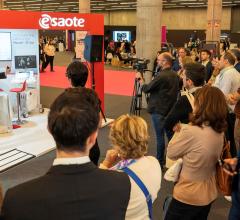
The modified GE Healthcare Vivid q ultrasound system being used during the mission.
When the final space shuttle mission launched July 8, 2011, a cardiovascular ultrasound (echocardiography) system was included in its payload, destined for the International Space Station (ISS). The National Aeronautics and Space Administration (NASA) selected GE Healthcare’s Vivid q echo system following a rigorous regimen of spaceflight hardware qualification and acceptance testing. The system, dubbed Ultrasound 2, was modified for spaceflight and had a custom-built external video/power converter assembly added.
On Aug. 23, ISS crewmembers successfully completed the first use of the system in an integrated cardiovascular experiment, which included an exercise echo scanning session. This was the first use of the Ultrasound 2 hardware on-orbit and allowed the experiment to resume ultrasound scanning after an eight-month gap. The data from the experiment is downloaded to the ground, in what is probably the longest-distance telecardiology program so far created.
The Vivid q is designed for cardiovascular imaging and enables assessment of left ventricular function and cardiac performance. The panoramic scan feature is a capability NASA has not had available in space before. NASA plans to use the equipment to replace and upgrade a 10-year-old ultrasound unit that stopped operating earlier this year in its Human Research Facility. The new device will be used for general crew health assessment and in space research investigations such as integrated cardiovascular, which looks at the weakening of heart muscles associated with long-duration spaceflight, and the Integrated Resistance and Aerobic Training Study (Sprint) evaluation of the use of high-intensity, low-volume exercise training to minimize loss of muscle, bone and cardiovascular function in astronauts.
A European Space Agency experiment called vascular echography will use the device to help evaluate changes in central and peripheral blood vessel wall properties (thickness and compliance) and cross-sectional areas of station astronauts during and after long-term exposure to microgravity. Vivid q may also be used in NASA’s New Millennium Observatory Network (NeMO Net) extreme mission operation, providing underwater space simulation. NeMO Net is a near-real-time data communications system that links instruments located in a submarine volcano, one mile underwater and 300 miles offshore from Oregon, to the Internet.



 August 27, 2024
August 27, 2024 









